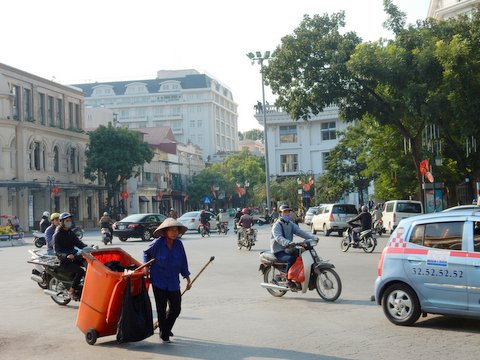Reston, Va., was founded as a model community. It lies about 20 miles west of Washington, D.C. and 15 miles from Langley, Va., home of the CIA.
From its founding idealists made their homes in Reston, as did employees of the CIA. It was a live-and-let-live place. It was a place that asserted its residents had things right in their heads: They were against racism, for peace, and for toleration of divorce and differing sexual orientation. They spoiled their children, enjoyed their martinis, and tried to be humble in a superior kind of way.
The CIA types fit right in with the other Restonians, partly because they were no different and partly because no one knew who worked at the CIA in the late 1960s. CIA employees talked vaguely about jobs in government, but did not spell them out. Novelists and newspapermen wrote that the CIA was headquartered in Langley, but casual travelers could not tell exactly where. On the George Washington Parkway, the sign for the turnoff for the agency said something about the Virginia Department of Highways.
Not only did the dreamers in Reston not know how many of the CIA’s employees lived among them, came to their parties and played with their children, but they also could not believe that their neighbors had anything to do with the big, bad things the CIA did, like overthrowing governments, assassinating dictators and pushing the envelope in Vietnam, Laos and Cambodia. Overthrowing the duly elected but far leftward Salvador Allende in Chile was not something you thought your cheery neighbor had a hand in.
Then, the CIA came in from the cold. It stopped pretending: It got its own road signs, employed a public relations staff and joined the suburban life in Northern Virginia without artifice. In ultra-liberal Reston, people simply believed that their CIA neighbors, who would identify themselves as working for “the company,” were the good spies not the bad operatives. Rather than ostracizing the company’s employees, Restonians venerated them. Spies were cool: “I know you can’t tell me what you do, but I think it’s very romantic.”
All of this came flooding back to me, along with my own days in Reston, when I read about the advanced interrogation techniques practiced by the CIA against high-value prisoners. Are the people who make prisoners stand naked and have their heads banged into a wall the same people who are active in soccer coaching on one of Reston’s many sports fields?
Are the seemingly benign bureaucrats, who yawn early on Friday evenings after a hard week, the same splendid guys who deprive prisoners of sleep for 180 hours, keep them in bright lights and with noise as loud as a locomotive up close? Are the guys who watch out for their kids at the pool the same fellows who do the water-boarding at secret prisons?
Do the wives who drive large cars, because their husbands would be too cramped in a small car, know that these same husbands stuff prisoners into crates where the pain might force a confession? Do the good people living the American Dream in bucolic Reston also enjoy walking on what former vice president Dick Cheney called “the dark side?”
Who are the advanced interrogation specialists? Are they secret sadists, super-patriots or just run-of-the-mill government employees?
Is my consternation at the knowledge that the CIA did things to prisoners that could be called torture naïve, a liberal indulgence? What would I do if I worked in Langley as well as lived in idealistic Reston? Would I “walk on the dark side?” Is it the torturer next door or the one within which has me in shock?
Reston is increasingly just another suburb shorn of the better-world pretensions that ruled in the late 1960s and though the 1970s. The residential requirements of the CIA’s employees are no longer notable—just its actions. –For the Hearst-New York Times Syndicate

 Follow
Follow
Leave a Reply